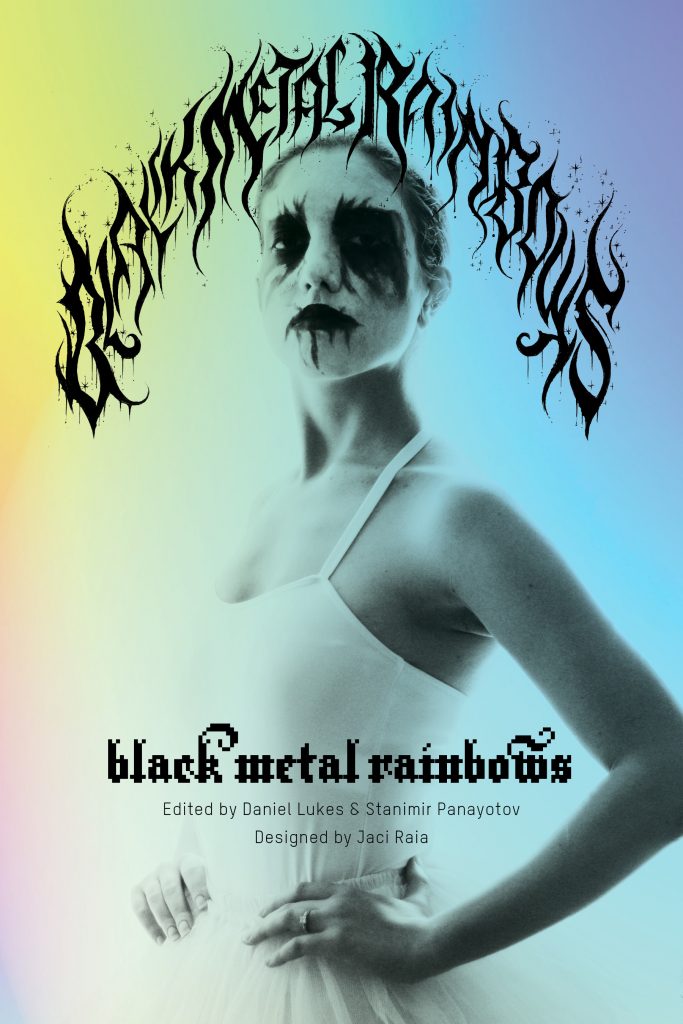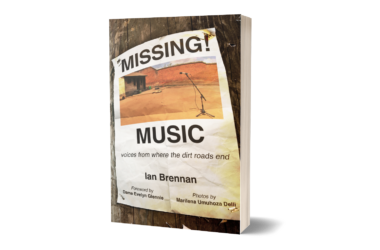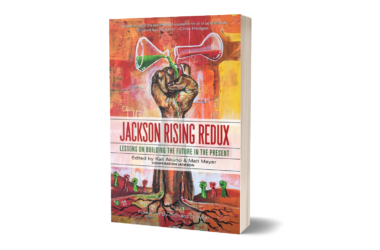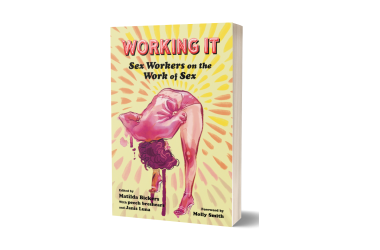By Justin Norton
Decibel
July 26th, 2021

No topic’s likely to get metalheads more aggrieved than black metal. Many black metal fanatics have an undying attachment to a certain sound and aesthetic. It’s little surprise, though, that black metal has changed and evolved over the past two decades – our recent HOF inductee Instinct: Decay is proof. The upcoming book Black Metal Rainbows seeks to explore the newer facets of the consistently evolving genre. The 400-page book contains artwork and essays from more than 80 people (there’s less than a week left to get involved via Kickstarter). Decibel asked a few questions to the three people responsible for the book: editors Daniel Lukes and Stanimir Panayotov, and designer Jaci Raia.
How did this collaboration begin?
Lukes: It started with a symposium in 2015 in Dublin about black metal theory. The conference was inspired by some of the things later covered in the book. I was looking to collaborate and make a book out of some of the ideas we explored. I knew Jaci (Raia) from seeing her work online, and it seemed like she would be the best person to help us put the book together and handle the visual aspects.
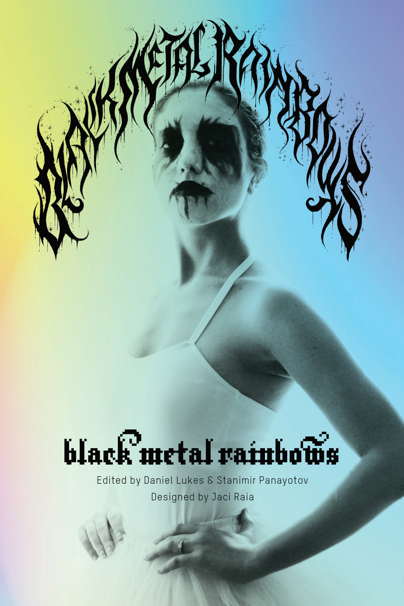
Black metal comes from a dark place. Some of the second-wave musicians were actual criminals. I find it interesting that over the course of a few decades that it’s now the subject of academic conferences. Did you ever discuss the huge contrast between what black metal was and what it’s become?
Lukes: What attracts us to the music is that it’s such a paradoxical genre. If you listen to Emperor, it starts low-fi but has almost neoclassical aspirations. The genre has always had these paradoxes, and that’s why it appealed to us. It pulls listeners in different directions and has many strands. Some of the music has a lot of sentimentality and unexpected qualities.
Panayotov: Black metal has always pushed boundaries, so it isn’t a surprise that the discourse around it became more philosophical. It can be snobbish at times. The fact that there was a lot of philosophical value to black metal from the get-go helped us develop the book. The music allows for discourse.
Once you decided a book was a good idea, how did you develop the “black metal rainbows” framework?
Panayotov: When Daniel and I decided to discuss this, we knew we needed more than an average book. From the inception, we didn’t want an academic book but something that was “mainstreamable.” We wanted a book that had enough sex appeal for various audiences. Jaci has been not just the designer of the book but like a co-author.
Lukes: We didn’t want to be too esoteric or obscure. Some pieces in the book go to weird places, but we thought a broad scope was best so anyone interested in black metal could pick this up and find something inspiring. A lot of what we wanted to do was break down some of the gatekeeping.
The title Black Metal Rainbows – is that a troll? The black metal purists are going to be upset to begin with…
Panayotov: I don’t think we ever had any discussions that this would be an international troll session of the black metal community (laughs). There was a heartfelt conviction from the get-go to make this community become a community in a way. We wanted a big part of this community to have a face. The trolls will be out there anyway.
Lukes: We love black metal. We are huge fans of black metal. This book is our love letter to black metal. I hate when Nazis try to claim the genre or when people say, “that music is filled with Nazis, so fuck that.” Why do they get to claim it? It’s one of our motivators. If this makes you laugh, that’s a good thing. I think a lot of black metal laughs at itself and has a comedic element. You don’t need to look around for it.
Plenty of people are trapped in a version of black metal that ended in Norway in the 1990s. But the genre has continued to evolve since then and doesn’t resemble what it once was.
Lukes: There’s a real connection between what is going on in the 90s and what is happening now. In the 90s, electronica and symphonic instruments were everywhere (in black metal) and people were trying to outdo each other with how weird they could be. The 00s were pretty conservative, but now metal seems up for grabs again.
What are your hopes for the book? That it start conversations?
Jaci Raia: Well, part of me wants to troll people with that title (laughs). But what I really want is to open people’s perspectives.
Panayotov: I’d like to see it foster debate. We aren’t trying to be gatekeepers or reformat the whole narrative about black metal. But there is a level of complexity in this scene that we can’t ignore.
Lukes: The cliche is that a black metal fan is sitting in his room alone and miserable. But black metal, for me, has been a way of connecting with friends and community. I think we take black metal more seriously by giving other aspects due space.
